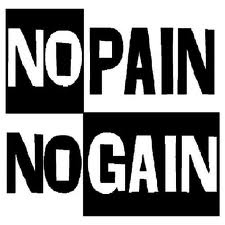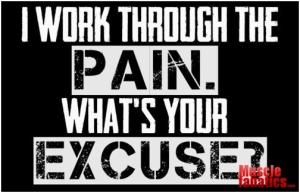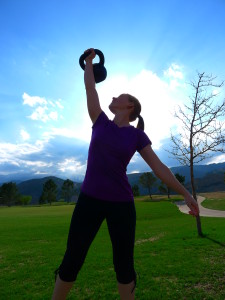What are you willing to exchange for a six-pack??
So I came across something from Precision Nutrition today and I loved it so much (I wish I had come up with it…I mean) I wanted to share it with you. 😉 It’s a simple, yet very informative, infographic that illustrates the lifestyle trade-offs required for different looks/body fat levels.
If you’re struggling with your health and fitness goals or just starting to make changes or if you simply desire to be healthy and fit, I think this is such an important thing to consider. Which is why I decided to write a quick little blog post about it. So without further ado, here are 3 reasons why you should take the time to consider the trade-offs:

#1. Balance
It brings to light the common extremes our minds tend to go to when thinking about diet and exercise: 1st extreme – that we can look like an air-brushed cover model with just a few small tweaks or the 2nd extreme – that it has to be painful and you have to restrict and deprive yourself of everything you enjoy in order to get healthy.
Both of these are simply not true. Which leads me to #2…
#2. Reality check
In life, we are constantly looking at and weighing the trade-offs. However, you can’t do this if you have a false sense of what the trade-offs are or if you’re just not sure what they are in the first place. For instance, have you ever wanted something so badly only to find yourself a little let down when you finally got it? Whether it’s because you had built up in your head its power and potential to give you something it actually had no capacity to give or simply because it did not deliver the results or happiness it promised, it’s easy to become disillusioned.
This is what so often happens in health and fitness. Losing weight so that you look and feel healthy versus losing so that you look like a super model involve very different levels of commitment and trade-offs. Yet I think most of us subconsciously equate the two. Same goes for being fit and being a marathon runner or being strong and looking like a fitness model. There is so much misinformation and air-brushing illusion out there that it can be hard to know what the reality is.
On top of that, in our all-or-nothing mindsets we tend to believe that we need to have every last detail in place and perfected before anything will change. We jump straight into the deep end and then wonder why, 4 days in, we already feel like we’re fighting just to keep our head above water.
#3. Prioritize
It forces you to figure out what your priorities are. Once you’ve figured out what’s most important to you and what you want your life to be about, then it’s a lot easier to decide which trade-offs are worth it and which ones aren’t.
Of course, different people are going to have different priorities and that’s OK. I’m not saying that you can’t or shouldn’t aspire to be lean. What I am suggesting is this:
* Take some time to honestly evaluate your life and your priorities. Figure out your purpose and what you want out of life. Be careful to make sure that you aren’t looking for joy or peace or a fix in something that has no capacity to give it.
** Take a look at The Cost of Getting Lean and consider the cost. You might realize that some trade-offs are just not worth it or you might find yourself surprised at how little the cost is! If the trade-offs are worth it, then go for it! If not, then you have a bigger reason & motivation that allows you to let go and be OK with a different goal.
Knowing your why, having that higher purpose, is critical for motivation and longevity, especially when it comes to enjoying a healthy lifestyle!













